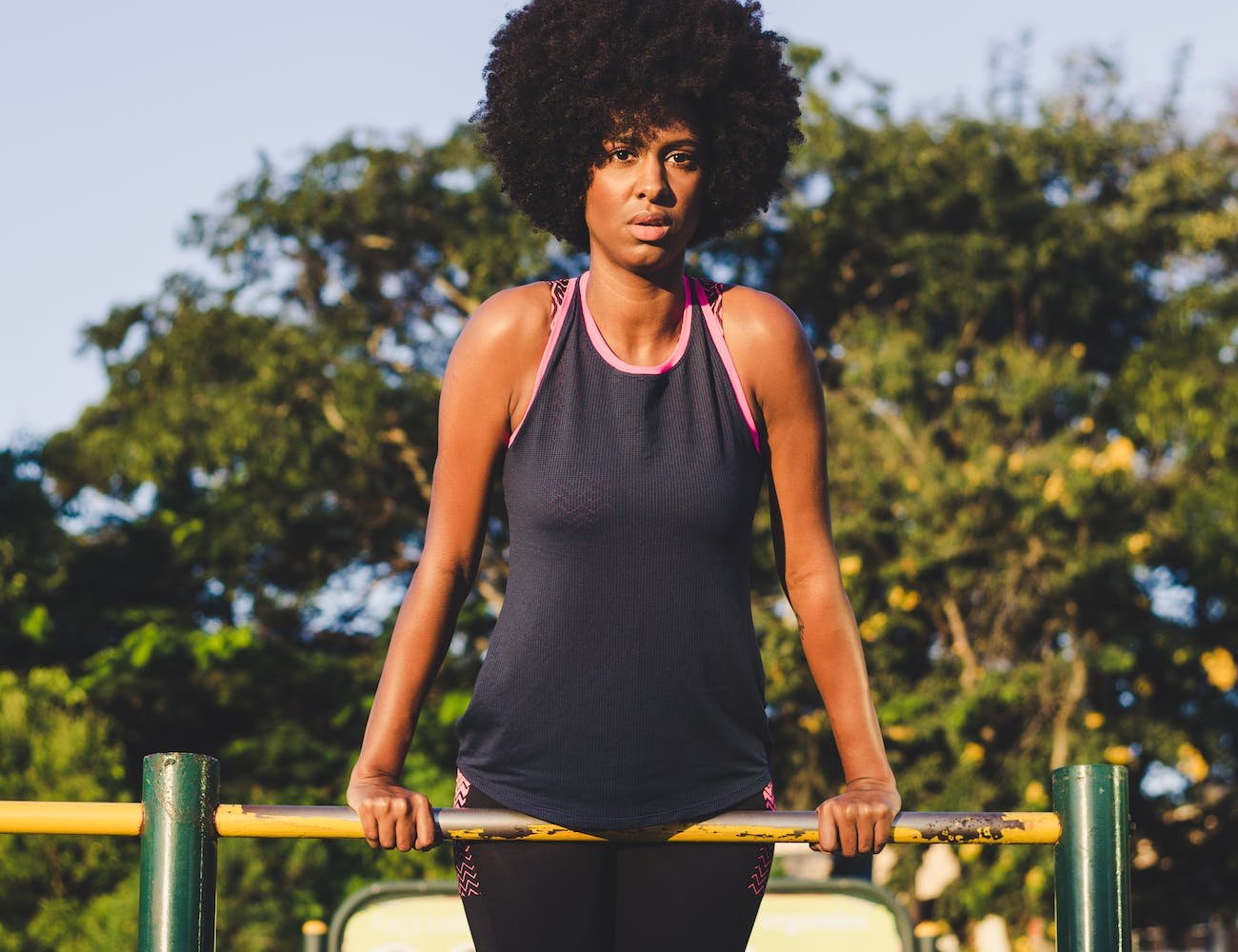
Aerobic Exercises for Beginners: Inspiring Beginnings – The Ultimate Guide to Starting Aerobic Exercises for Beginners
As I lace up my sneakers, strap on my heart rate monitor, and fill up my water bottle, I’m reminded of the essential steps that mark the beginning of any successful aerobic journey, particularly when it comes to exercises for beginners.
I’ve learned that starting an aerobic exercise routine can be as thrilling as it is daunting, especially for those who are new to it. My aim is to demystify the process, offering practical advice and straightforward strategies that pave the way for a sustainable and enjoyable fitness regimen.
From the importance of setting realistic goals to selecting the right gear, and understanding the crucial role of a proper warm-up, I’ll guide you through the foundational elements that are often overlooked but are paramount for long-term success in aerobic exercises for beginners.
And while the path to achieving your fitness objectives may appear straightforward, I’ll reveal why each step is integral and how unexpected nuances can significantly enhance your experience and results, leaving you curious about the layers of knowledge that can transform your initial steps into a lifelong commitment to health.
Understanding Aerobic Exercise
Aerobic exercise, often referred to as cardio, is a type of physical activity that increases your heart rate and breaths, fueling your body with oxygen-rich blood and improving your overall endurance and cardiovascular health. It’s a liberating way to enhance your fitness, granting you the freedom to choose from a vast array of activities that fit your lifestyle and preferences. Whether it’s brisk walking, swimming, cycling, or dancing, the essence of cardio lies in its ability to boost oxygen consumption, which is pivotal for a healthy metabolism and energy production.
Delving into the cardio benefits, I’ve discovered that regular aerobic workouts can lead to a stronger heart, which pumps blood more efficiently, reducing the risk of heart disease and high blood pressure. It also helps in managing weight, as sustained movement increases calorie burn. Additionally, it’s a fantastic stress-buster, with the natural release of endorphins during exercise acting as a mood enhancer.
What’s more, improved oxygen consumption doesn’t just benefit the heart. It plays a crucial role in the overall functioning of my body. When I engage in aerobic exercises, my muscles become better at using oxygen, which in turn improves their strength and endurance. The more I train aerobically, the more efficiently my body uses oxygen, which is a key component of long-term health and vitality.
As someone who values freedom, I find that understanding the underlying principles of aerobic exercise, such as oxygen consumption and its impact on my body, empowers me to make informed decisions about my health. It’s not just about the physical gains; it’s about the independence and well-being that come with a fit and resilient body. For a deeper understanding of how aerobic exercises can significantly benefit your heart, you can explore further here.
Setting Realistic Goals
When I started incorporating aerobic exercises into my routine, I quickly learned the importance of setting achievable goals.
I make sure to define targets that are challenging yet realistic, keeping my motivation high without setting myself up for disappointment.
Tracking my progress regularly helps me stay on course and recognize the improvements, no matter how small they might seem at first.
Define Achievable Targets
Setting realistic goals is crucial as it provides a clear and attainable benchmark for your progress in aerobic exercise. I’m focusing on setting achievable targets that align with my desire for freedom and personal growth. By mapping out fitness milestones and celebrating incremental achievements, I’m motivated to keep moving forward. Here’s how I plan my journey:
| Week | Fitness Milestones | Incremental Achievements |
|---|---|---|
| 1 | Walk 30 minutes daily | Completed all walks |
| 2 | Introduce light jogging | Jogged for 10 minutes straight |
| 3 | Increase to 45 minutes | Walked and jogged as planned |
| 4 | Add variety with cycling | Cycled for 20 minutes |
| 5 | Aim for 5k run | Finished a 3k run |
With these realistic targets, I’m setting myself up for success, one step at a time.
Measure Progress Regularly
To ensure I’m on track with my fitness goals, I regularly monitor my progress, making adjustments as necessary to maintain a steady path toward personal growth in aerobic exercise. Tracking metrics like time, intensity, and frequency of workouts is key.
I’ve found that keeping a fitness journal isn’t just a way to record these figures, but it’s also incredibly motivating. It’s a tangible representation of my commitment and allows me to celebrate small victories along the way.
I look for patterns in my performance, noting what works and what doesn’t, which guides my future workouts. This habit of measurement and reflection ensures I’m not blindly following a routine but actively shaping my path to freedom through fitness, one step at a time.
Essential Gear and Equipment
Before you lace up your sneakers and hit the pavement, it’s crucial to invest in the right gear and equipment for a safe and effective aerobic workout. Let’s dive right into the essentials, starting with apparel selection. You’ll want clothing that’s breathable and wicks away sweat—think synthetic fibers like polyester or nylon. They’ll keep you dry and comfortable, letting you focus on your movements rather than being weighed down by sweat-soaked cotton.
Footwear choices are equally vital; your shoes should offer good support and cushioning to absorb impact, especially if you’re pounding the streets or taking on high-impact activities. It’s not just about comfort; the right shoes can help prevent injuries, so take the time to get fitted at a specialty store. Remember, your freedom in movement is directly tied to the quality of your gear.
Now, beyond apparel and footwear, consider a few other items. A water bottle is non-negotiable—you need to stay hydrated. If you’re exercising outdoors, a cap and sunglasses might be necessary for protection against the sun. For those who prefer the rhythm of music to keep the pace, a pair of secure-fitting, sweat-resistant earbuds can be a game-changer. And lastly, if you’re hitting the gym or a class, a small towel and a quality gym bag to carry your essentials will round off your gear list nicely.
There you have it. With the right gear and equipment, you’re set to embark on your aerobic journey with confidence. Remember, it’s not about having the most expensive items but choosing what enhances your performance and keeps you safe.
Let’s get moving!
Warming Up Basics
Now that you’ve equipped yourself with the right gear, let’s focus on the importance of warming up to prepare your body for aerobic exercise. I can’t stress enough how vital this step is—warming up isn’t just a ritual, it’s your body’s way of gearing up for the activity ahead. Think of it as a green light for your muscles and joints, signaling them to get ready for the workout you’re about to dive into.
I start with dynamic stretching, which is crucial for limbering up. This isn’t about holding a pose for minutes on end; it’s about gentle movements that increase your range of motion and blood flow. Stretching importance can’t be overstated—it prepares my muscles for the demands of aerobic exercises and can significantly aid in injury prevention.
A good warm-up raises my heart rate gradually. I begin with low-intensity movements like walking or slow jogging. This approach is especially important for beginners because it gives you the freedom to listen to your body and adjust the intensity as needed. Plus, it’s a great way to ease into exercise without feeling overwhelmed.
I include movements that mimic the exercises I’ll be doing in my routine. If I’m planning to run, I’ll include high knees or butt kicks during my warm-up. It’s like giving my body a preview of the main event.
Injury prevention is, after all, a top priority. A proper warm-up reduces the risk of pulling a muscle or straining a tendon, which can set you back in your fitness journey. So, I take these few minutes to prepare seriously—it’s the foundation for a safe and effective workout.
Aerobic Exercises for Starters
Embarking on aerobic exercises as a beginner can be both thrilling and daunting, but starting with simple activities paves the way for a healthier and more active lifestyle. It’s crucial for me to select workouts that not only enhance my heart health but also allow me to manage my breath control, which is essential for endurance and overall well-being.
Walking is the perfect entry point. It’s free, doesn’t require special equipment, and I can adjust my pace based on how I’m feeling. I’ve found that brisk walking for at least 30 minutes can significantly bolster my cardiovascular system. To keep it engaging, I often switch up my routes or listen to music.
I also enjoy swimming, which is gentle on my joints and great for breath control. The resistance of water ensures that I’m getting a full-body workout, improving my muscle strength and heart health. Plus, focusing on my breathing rhythm while swimming enhances my lung capacity.
Cycling, whether stationary or outdoors, is another excellent option. It provides a low-impact way to raise my heart rate and improve my leg strength. I can start with shorter distances and gradually build up as my stamina increases.
For variety, I sometimes turn to dance-based fitness classes. They’re fun and make me feel liberated as I move to the music. Dancing not only improves my heart health but also boosts my coordination and flexibility.
It’s essential that I listen to my body and progress at my own pace. By doing so, I’m setting myself up for a lifetime of health and freedom through aerobic exercise. To dive into the fun and energy of aerobic dance workouts, which combine fitness with rhythm, check out this resource here.
Structuring Your Workout
Crafting a balanced workout plan is essential to maximize the benefits of aerobic exercise and keep my routine interesting and sustainable. I’ve learned that structuring my workout with a thoughtful exercise sequence is not just about what exercises I do; it’s also about how I arrange them to manage workout intensity and ensure a holistic approach to fitness.
For me, every aerobic workout follows a basic structure – I start with a warm-up, move on to the main workout, and end with a cool-down. This sequence helps my body prepare for and recover from the stress of exercise, reducing the risk of injury and improving my overall performance.
Here is a simple table I created to visualize the three key phases of my workout:
| Phase | Duration | Focus |
|---|---|---|
| Warm-up | 5-10 min | Gradually increase heart rate |
| Main Workout | 20-40 min | Maintain target heart rate |
| Cool-down | 5-10 min | Lower heart rate, stretch |
During the main workout phase, I vary the workout intensity to keep things challenging yet achievable. By incorporating intervals of higher intensity followed by periods of lower intensity, I can push my limits without burning out too quickly. This approach also encourages freedom within my routine, as I’m not locked into a monotonous pace – I can mix it up based on how I feel each day.
Lastly, I make sure to listen to my body and adjust the intensity and duration accordingly. It’s about finding the right balance that works for me, giving me the freedom to enjoy the journey of improving my fitness and health.
Monitoring Your Progress
Tracking my fitness progress through consistent measurements and reflective assessments is crucial to gauge the effectiveness of my aerobic workout plan. I’ve discovered that without monitoring my progress, it’s tough to know if I’m moving toward my goals or if I need to adjust my approach. Here’s how I keep tabs on my journey:
- Tracking Technology
- I utilize a fitness tracker to monitor my heart rate and calories burned during each session.
- The tracker syncs with an app on my phone, where I can see trends over time.
- I set alerts to remind me to move if I’ve been inactive for too long.
- Fitness Journaling
- Each day, I jot down how I feel after my workouts—the highs, the lows, and everything in between.
- I note the type of aerobic exercise, duration, intensity, and any personal achievements.
- Reflecting on my entries helps me celebrate victories and plan for upcoming challenges.
- Reflective Assessments
- Every few weeks, I reassess my fitness level with a timed mile or a set number of reps in a specific exercise.
- I compare these results to my initial benchmarks to see tangible improvements.
- I adjust my workout plan based on these reflections to ensure continuous progression.
This structured approach to monitoring my progress keeps me informed and motivated. It’s liberating to see the numbers and notes reflect the effort I’m putting in. As someone who values freedom, I find it empowering to have control over my fitness journey, and these methods ensure that I’m always moving in the direction of my health and wellness goals.
Staying Motivated and Consistent
While monitoring my progress provides a concrete measure of my improvements, maintaining motivation and consistency is key to achieving long-term fitness success. I’ve learned that it’s not just about the burst of excitement when starting a new routine; it’s about embedding that routine into my lifestyle, making it as natural as waking up in the morning.
To keep the fire of motivation burning, I’ve found that having an exercise buddy is incredibly effective. It’s someone who shares my fitness goals and keeps me accountable. We cheer each other on, push through the tough days, and celebrate the milestones. It’s not just about the exercise; it’s about the shared experience that makes the journey enjoyable and sustainable.
Incorporating a reward system also plays a crucial role in staying on track. After reaching a certain goal, I treat myself to something I love, be it a small luxury or a new experience. This isn’t about indulging in counterproductive rewards but about acknowledging my hard work and successes. It’s a way to honor the commitment I’ve made to my health and to remind myself why I started.
I’ve learned that consistency doesn’t mean rigidly sticking to a plan without room for life’s ebbs and flows. It’s about adapting while staying aligned with my fitness objectives. If I miss a session, I don’t beat myself up. Instead, I adjust my schedule and get back on track, understanding that flexibility is a part of the journey to freedom in fitness.
Each step, each breath, each beat of my heart during aerobic exercise moves me closer to where I want to be. And that’s a journey worth staying motivated for.
Frequently Asked Questions
How Do Pre-Existing Medical Conditions Affect My Ability to Start an Aerobic Exercise Routine?
Imagine this: I’ve got a medical condition that might affect my workouts. So, I’ll seek professional consultation, and we’ll tailor exercise modifications to ensure my routine is safe and effective. Freedom in fitness awaits!
Can Aerobic Exercise Improve Mental Health or Reduce Stress, and if So, How?
Absolutely, aerobic exercise can boost mental health by altering brain chemistry, reducing stress hormones like cortisol, and promoting the release of endorphins, which are natural mood elevators and painkillers. To gain more insight into how aerobic exercises can alleviate stress and anxiety, read more here.
What Dietary Considerations Should I Keep in Mind When Starting an Aerobic Exercise Program?
I’m focusing on meal timing and hydration’s importance. I’ll eat balanced meals a few hours before exercising and keep water handy to ensure I’m energized and hydrated throughout my workouts.
How Does Age Impact the Type of Aerobic Exercises I Should Start With, and Are There Specific Considerations for Seniors?
As I’ve aged, I’ve learned that age adaptation in exercise is crucial. For senior safety, I choose low-impact aerobics, ensuring I stay active while respecting my body’s changing abilities and needs. For tailored advice on engaging in aerobic exercises with chronic health conditions, find valuable information here.
Are There Any Benefits to Doing Aerobic Exercises Outdoors Vs. Indoors, and How Should the Environment Influence My Exercise Choices?
Outdoor aerobic exercises can boost motivation with fresh scenery and sunlight. However, I always consider the weather to ensure safety and comfort, adjusting my routine to relish the freedom of exercising in nature.
Conclusion
In wrapping up this guide to beginning aerobic exercises, we’ve covered a comprehensive path from the basics to the practical steps needed to embark on this fitness journey. Remember, starting an aerobic routine is about more than just physical activity; it’s about adopting a healthier lifestyle and embracing the benefits that come with it.
We’ve explored the essentials of aerobic exercise, the importance of setting realistic goals, the right gear to enhance your workouts, and the crucial role of warm-ups. Each of these elements plays a significant part in ensuring your aerobic journey is not only successful but also enjoyable and sustainable.
As you move forward, keep in mind that consistency is key. Regular aerobic exercise can lead to significant improvements in your cardiovascular health, weight management, and overall well-being. Don’t be discouraged by small setbacks. Instead, use them as learning experiences to refine your approach.
Finally, remember that your fitness journey is unique to you. Listen to your body, adjust your routines to suit your needs, and most importantly, enjoy the process. With each step, you’re making progress towards a healthier, more active life. So, lace up your sneakers and take that exhilarating step towards achieving your fitness goals.




Leave a Reply
You must be logged in to post a comment.